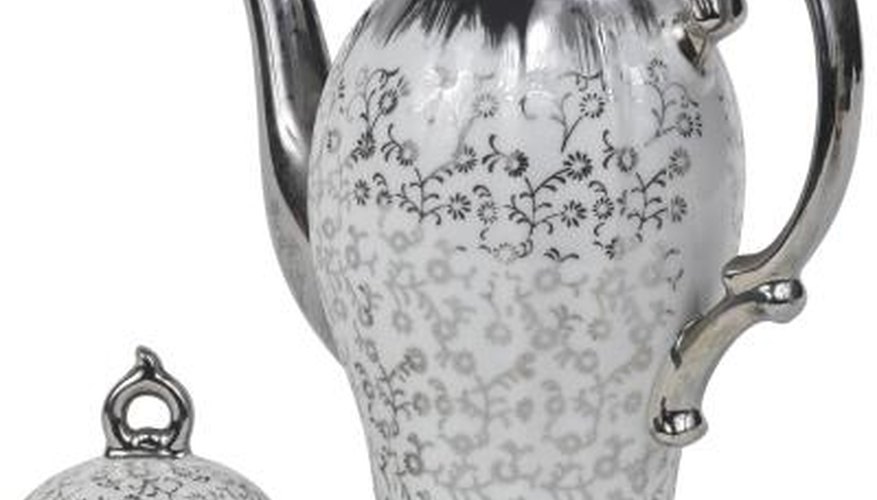Silver items need routine cleaning to avoid damage from tarnish and/or pitting. Tarnish usually appears as an orange or grey "cloud" on the surface. But pitting -- or black spots that gouge below the silver's surface -- is evidence of deeper damage. Silver or silver-plated items that have black pitted marks are already damaged. Minor pitting may be reduced through careful home cleaning. Severely pitted items can only be repaired by a professional silver plating company.
- Silver items need routine cleaning to avoid damage from tarnish and/or pitting.
- But pitting -- or black spots that gouge below the silver's surface -- is evidence of deeper damage.
Clean the silver item with a mild, non-abrasive soap and rinse thoroughly in water. Dry the item immediately with a soft cotton cloth.
Apply a professional-grade silver cleaning cream with a soft, dry cloth. Use straight strokes, not a circular motion. Don't "scrub" the surface. Allow the cream to dry if so indicated by the cream's directions.
- Apply a professional-grade silver cleaning cream with a soft, dry cloth.
Wipe the cream away with a fresh cloth. Remove all cream residue, including any located within intricate surface designs or detailing.
Buff gently the surface of the cleaned silver with a fresh cloth. If serious pitting remains, you may need professional intervention.
TIP
The Society of American Silversmiths suggests storing silver in acid-free tissue paper or zip-top plastic bags, Never wrap silver items in newspaper or kitchen cling film, both of which can contain acids that enhance tarnishing. The most aggressive pitting agents are acids (including citrus juice, vinegars) and salts, The latter includes the natural salts of your skin. Remove salt from silver salt shakers when not in use. Avoid touching the silver with your bare hands.
WARNING
Never put silver or silver-plated items in a dishwasher. Never attempt to metal-buff out the silver surface unless you are an experienced silver worker.
